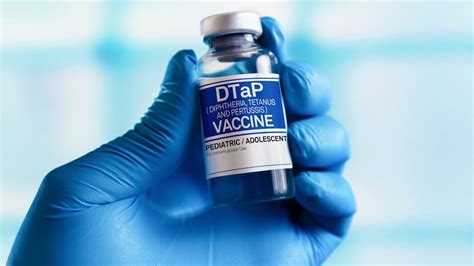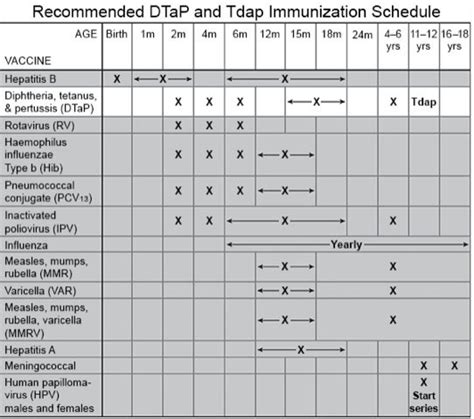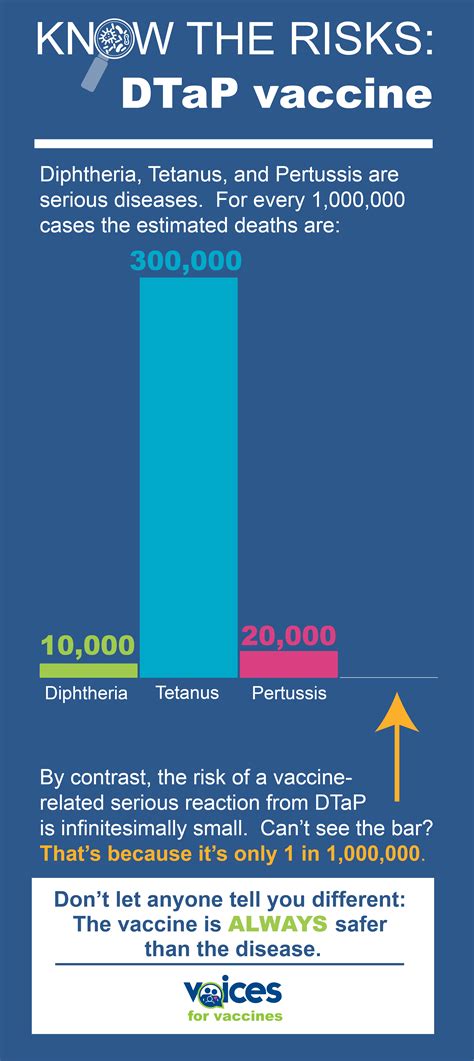Intro
Discover essential DTaP vaccine facts, including its safety, efficacy, and side effects, to protect against diphtheria, tetanus, and pertussis, and learn about vaccination schedules and booster shots.
The DTaP vaccine is a crucial component of childhood immunization, protecting against three serious bacterial infections: diphtheria, tetanus, and pertussis. Understanding the importance of this vaccine is essential for parents, caregivers, and healthcare professionals alike. The DTaP vaccine has undergone significant development over the years, with ongoing research aimed at improving its efficacy and safety profile. As a result, the vaccine has become a cornerstone of pediatric care, playing a vital role in preventing the spread of these infectious diseases. With the rise of vaccine-preventable diseases, it is more important than ever to stay informed about the benefits and mechanisms of the DTaP vaccine.
The impact of vaccine-preventable diseases should not be underestimated. Diphtheria, tetanus, and pertussis can have severe consequences, including respiratory failure, cardiac complications, and even death. The DTaP vaccine has been instrumental in reducing the incidence of these diseases, with significant declines in reported cases over the past few decades. However, complacency can be dangerous, and it is essential to continue promoting vaccination efforts to maintain herd immunity and protect vulnerable populations. By exploring the facts about the DTaP vaccine, individuals can make informed decisions about their health and the health of their loved ones.
The development of the DTaP vaccine has been a remarkable achievement in the field of medicine. The vaccine's components work together to provide comprehensive protection against the three targeted diseases. Diphtheria, caused by the bacterium Corynebacterium diphtheriae, can lead to severe respiratory illness and cardiac complications. Tetanus, caused by Clostridium tetani, can result in muscle stiffness, spasms, and respiratory failure. Pertussis, also known as whooping cough, is a highly contagious respiratory illness caused by Bordetella pertussis. The DTaP vaccine has been designed to combat these diseases, and its effectiveness has been consistently demonstrated in clinical trials and real-world settings.
How the DTaP Vaccine Works

Benefits of the DTaP Vaccine
The benefits of the DTaP vaccine are numerous and well-documented. Some of the key advantages include: * Protection against three serious bacterial infections: diphtheria, tetanus, and pertussis * Reduced risk of complications and death from these diseases * Prevention of outbreaks and epidemics * Protection of vulnerable populations, such as young children and older adults * Boosting of herd immunity, which helps to prevent the spread of diseaseDTaP Vaccine Schedule

Contraindications and Precautions
While the DTaP vaccine is generally safe and well-tolerated, there are certain contraindications and precautions to be aware of. These include: * Severe allergic reaction to a previous dose of the vaccine * History of neurological disorders, such as seizures or encephalopathy * Moderate to severe illness, such as fever or respiratory infection * Pregnancy or breastfeeding (although the vaccine is generally considered safe in these situations)Common Side Effects

Serious Side Effects
While rare, serious side effects can occur with the DTaP vaccine. These include: * Severe allergic reaction, such as anaphylaxis * Neurological disorders, such as seizures or encephalopathy * Blood disorders, such as thrombocytopenia or hemolytic anemiaBoosting Immunity

Vaccine Effectiveness
The effectiveness of the DTaP vaccine has been consistently demonstrated in clinical trials and real-world settings. Studies have shown that the vaccine is highly effective in preventing the three diseases, with efficacy rates ranging from 80-90%. The vaccine has also been shown to be effective in reducing the severity of disease, even in cases where it does not provide complete protection.Real-World Examples

Statistical Data
Statistical data on the DTaP vaccine's effectiveness is impressive. According to the CDC, the vaccine has been shown to: * Reduce the risk of pertussis by 80-90% * Reduce the risk of diphtheria by 90-95% * Reduce the risk of tetanus by 70-80%Conclusion and Next Steps

We invite you to share your thoughts and experiences with the DTaP vaccine in the comments section below. Have you or a loved one received the vaccine? What were your experiences with the vaccine? Do you have any questions or concerns about the vaccine? Share your story and help others make informed decisions about their health.
What is the DTaP vaccine, and how does it work?
+The DTaP vaccine is a combination vaccine that protects against three serious bacterial infections: diphtheria, tetanus, and pertussis. The vaccine works by introducing a small, harmless piece of the bacteria or a weakened form of the toxin to the body, triggering an immune response that provides long-term protection against the three diseases.
What are the benefits of the DTaP vaccine?
+The benefits of the DTaP vaccine include protection against three serious bacterial infections, reduced risk of complications and death from these diseases, prevention of outbreaks and epidemics, protection of vulnerable populations, and boosting of herd immunity.
What are the common side effects of the DTaP vaccine?
+Common side effects of the DTaP vaccine include redness, swelling, or pain at the injection site, fever, fussiness or irritability, vomiting or diarrhea, fatigue or lethargy, and headache or muscle pain.
How effective is the DTaP vaccine?
+The DTaP vaccine is highly effective in preventing the three diseases, with efficacy rates ranging from 80-90%. The vaccine has also been shown to be effective in reducing the severity of disease, even in cases where it does not provide complete protection.
What is the recommended schedule for the DTaP vaccine?
+The DTaP vaccine is typically administered in a series of doses, with the first dose given at 2 months of age, followed by doses at 4, 6, and 15-18 months of age. A booster dose is recommended at 4-6 years of age.
